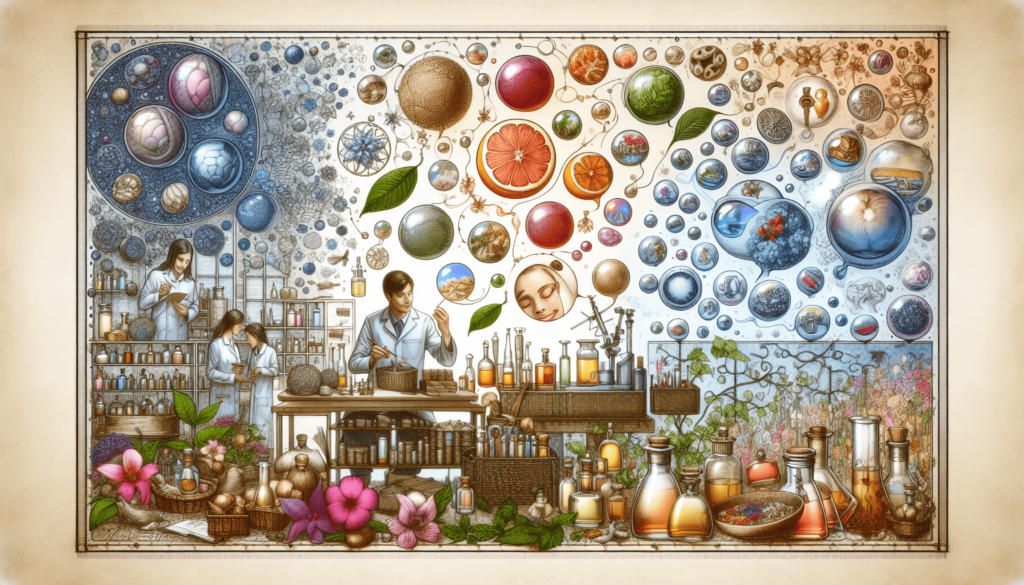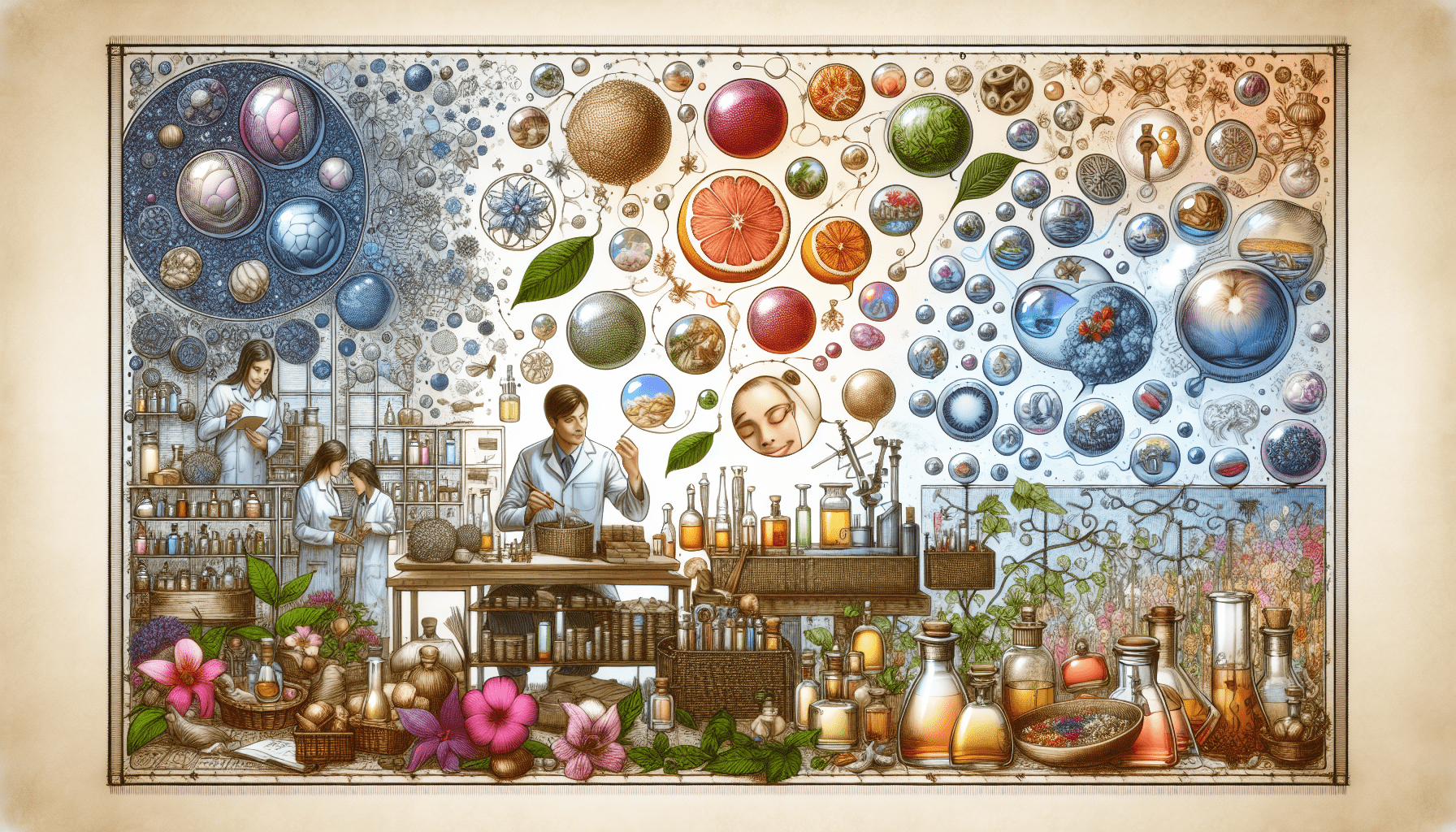Imagine walking into a room and immediately being greeted with a beautiful scent that transports you to a serene garden or a cozy bakery. Have you ever stopped to wonder what exactly goes into creating such delightful fragrances? From essential oils to synthetic compounds, a fragrance is a carefully crafted blend of various aromatic ingredients that come together to create a unique and captivating scent experience. Each ingredient plays a significant role in evoking different emotions and memories, making the world of fragrances a truly fascinating and enchanting one.
What Is In A Fragrance?
Have you ever wondered what exactly goes into creating your favorite fragrance? From the top notes to the base notes, a fragrance is a complex blend of different ingredients that come together to create a unique scent. In this article, we will explore the different components of a fragrance and how they work together to create an unforgettable aroma.

The Anatomy of a Fragrance
Let’s start by breaking down the different components of a fragrance. A typical fragrance is made up of three main parts: top notes, heart (or middle) notes, and base notes. Each of these parts contributes to the overall scent profile and longevity of the fragrance.
Top notes are the first scents that you smell when you spray a fragrance. These notes are light and refreshing, and they typically evaporate within the first few minutes of application. Heart notes are the middle, or main, part of the fragrance. These notes last longer than top notes and help to establish the overall scent character. Base notes are the final scents that you smell as the fragrance dries down. These notes are the longest-lasting and help to anchor the fragrance to your skin.
Ingredients in a Fragrance
Now that we have covered the basic structure of a fragrance, let’s dive into the ingredients that are used to create these beautiful scents. Fragrances are made up of a combination of natural and synthetic ingredients, each of which contributes to the overall aroma.
Natural Ingredients
- Essential Oils: Essential oils are the concentrated extracts from plants, flowers, fruits, and spices. These oils are highly aromatic and are often used as the primary scent in natural fragrances.
- Absolutes: Absolutes are similar to essential oils but are extracted using solvents instead of steam distillation. These extracts are highly potent and add depth and complexity to a fragrance.
- Resins: Resins are sticky substances that are extracted from trees and plants. These ingredients help to give fragrances a warm, rich base.
- Balsams: Balsams are aromatic oleoresins that are extracted from plants. These ingredients add a sweet, sticky note to fragrances.
- Citrus Oils: Citrus oils are extracted from the peels of citrus fruits such as oranges, lemons, and bergamot. These oils are light and refreshing and are often used as top notes in fragrances.
- Floral Extracts: Floral extracts are obtained from flowers such as roses, jasmine, and lilies. These extracts are highly aromatic and are often used as heart notes in fragrances.
Synthetic Ingredients
- Aldehydes: Aldehydes are organic compounds that are often used to add a clean, soapy scent to fragrances.
- Aromachemicals: Aromachemicals are synthetic compounds that are used to replicate natural scents. These ingredients are often used to create unique scent profiles.
- Fixatives: Fixatives are ingredients that help to stabilize the fragrance and prolong its longevity on the skin.
- Synthetic Musks: Musks are synthetic compounds that are used to add depth and warmth to fragrances. These ingredients are often used as base notes.
Labeling Regulations
When it comes to labeling fragrances, there are specific regulations that must be followed to ensure that consumers are informed about the ingredients in the product. In the United States, the Food and Drug Administration (FDA) regulates the labeling of fragrances to protect consumers from potentially harmful ingredients.
Fragrance labels in the United States must adhere to the following regulations:
- The ingredients in a fragrance do not have to be listed individually on the label. Instead, fragrances can be listed simply as “fragrance” or “parfum.”
- If a fragrance contains any potential allergens, such as certain essential oils or synthetic ingredients, these ingredients must be listed on the label.
- The label must indicate whether the fragrance contains any ingredients that are known to be potential allergens or irritants.
How Fragrances Are Made
The process of creating a fragrance is a complex and intricate one that requires skill, creativity, and an in-depth knowledge of aromatic ingredients. Fragrance houses, also known as perfumeries, are responsible for developing new fragrances and blending different scents to create unique and memorable aromas.
The Perfumer’s Palette
Perfumers, also known as “noses,” are the talented individuals who are responsible for creating fragrances. These experts have a keen sense of smell and an understanding of how different scents work together to create a harmonious blend. Perfumers often work with a wide range of ingredients, from natural essential oils to synthetic compounds, to create their signature fragrances.
The Blending Process
Once a perfumer has selected the ingredients for a fragrance, the blending process begins. This process involves carefully measuring out each ingredient and combining them in precise proportions to create the desired scent profile. Perfumers often use a combination of top, heart, and base notes to create a well-rounded fragrance that evolves on the skin over time.
Aging and Maturation
After the initial blending process is complete, the fragrance must age and mature to allow the ingredients to harmonize and develop their full potential. This aging process can vary in length depending on the fragrance, with some scents requiring only a few days to mature and others needing several weeks or even months to reach their peak.
Quality Control
Throughout the fragrance-making process, quality control is essential to ensure that the final product meets the perfumer’s standards. Perfumers often work closely with chemists and technicians to test and refine their fragrances, making adjustments to the composition as needed to achieve the desired scent.
The Impact of Fragrances on Health
While fragrances are beloved by many for their ability to evoke memories and create an aura of sophistication, it is essential to be aware of the potential impact of these products on our health. Fragrances can contain a wide range of ingredients, including allergens and irritants, that may cause adverse reactions in some individuals.
Common Allergens
Some fragrances contain ingredients that are known allergens, such as certain essential oils and synthetic compounds. These allergens can cause skin irritation, redness, and itching in individuals with sensitive skin. It is essential to be aware of these potential allergens and to patch test a fragrance before applying it to your skin.
Irritants
In addition to allergens, fragrances can also contain irritants that may cause discomfort or adverse reactions in some individuals. These irritants can include aldehydes, synthetic musks, and other fragrance ingredients that may be harsh on the skin. If you experience any discomfort or irritation when using a fragrance, it is best to discontinue use and consult a healthcare professional.
Fragrance Sensitivity
Some individuals may be sensitive to fragrances and may experience symptoms such as headaches, dizziness, or nausea when exposed to strong scents. Fragrance sensitivity can be exacerbated by certain ingredients in fragrances, such as synthetic musks or aldehydes. If you are sensitive to fragrances, it is best to choose fragrance-free products to avoid potential adverse reactions.
Choosing the Right Fragrance
With so many fragrances to choose from, selecting the right scent can feel like a daunting task. However, by considering your personal preferences and understanding the different fragrance categories, you can narrow down your options and find a scent that suits your style and personality.
Fragrance Categories
Fragrances are typically categorized into different scent families based on their main ingredients and scent profile. Some common fragrance categories include:
- Floral: Floral fragrances are light and feminine, with notes of roses, jasmine, and lilies.
- Woody: Woody fragrances are warm and earthy, with notes of cedarwood, sandalwood, and patchouli.
- Oriental: Oriental fragrances are rich and exotic, with notes of spices, resins, and amber.
- Citrus: Citrus fragrances are fresh and zesty, with notes of lemon, orange, and grapefruit.
Personal Preferences
When choosing a fragrance, consider your personal preferences and the scents that you enjoy. Think about the types of scents that you are drawn to, whether you prefer light and floral notes or rich and spicy accords. By selecting a fragrance that resonates with you, you can create a signature scent that reflects your individuality.
Conclusion
In conclusion, fragrances are a blend of art and science, with perfumers crafting unique scents that evoke emotion and memories. By understanding the different components of a fragrance and how they work together, you can appreciate the complexity and beauty of these aromatic creations. Whether you prefer light and floral scents or rich and exotic aromas, there is a fragrance out there for everyone to enjoy. So next time you spritz on your favorite fragrance, take a moment to appreciate the artistry and skill that went into creating that beautiful scent.

